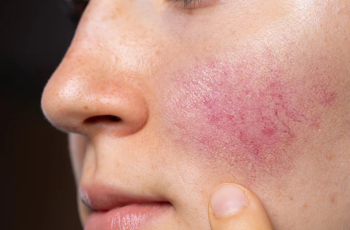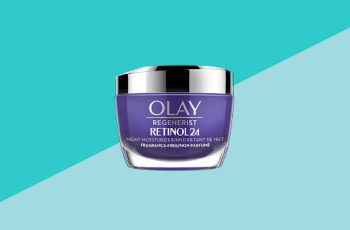
Safflower Oil in Skin Care
Safflower (Carthamus tinctorius) is one of the oldest recorded crops in the world, with records dating it back to ancient Egypt. (7)
It is commonly used in as a cooking oil or supplemental ingredient in processed foods.
Additionally, safflower oil is one of the most common and versatile natural, clean ingredients in skin care.
It has moisturizing, anti-inflammatory, antimicrobial, and skin lightening capabilities.
To find out if safflower oil is a good inclusion for your custom skin care regimen, read below and take our skin type questionnaire, then check out our full collection of safflower products here!
What kind of oil is safflower oil?
Safflower oil is composed mainly of unsaturated fats, primarily linoleic acid and oleic acid, followed by a small concentration of beneficial phenolic compounds.
Even though it is derived from a flower, safflower oil is too thick to be considered an essential oil; it would be better classified as a carrier oil.
Carrier oils are used to hold together other ingredients and help deliver them into the skin.
There is a low concentration of saturated fatty acids in safflower oil as well, but it does not solidify into a creamy texture at room temperature.
What are the active compounds?
The fatty acid composition of safflower oil varies based on the region, weather, and processing of each flower, but for the most part it is principally composed of linoleic fatty acids. (2,3)
After linoleic acid, the second most common compound in safflower oil is oleic acid, followed far behind by the saturated palmitic and stearic acids.
The phenolic compounds like various flavonoids and carotenoids present in safflower oil have antioxidant properties as well as antimicrobial abilities.
The most significant feature of safflower oil’s chemical composition is that it contains a higher concentration of linoleic acid on average than any other common plant oil used in skin care.
There are other oils on the skin care market with very similar features to safflower oil, but none of them are quite as potent hydrating, anti-inflammatory linoleic acid.
What does linoleic acid do?
Most of the benefits attributed to safflower in skin care oil can be traced back to its linoleic acid content.
The main beneficial properties of linoleic acid are that it aids in hydrating the skin, soothes inflammation, repairs the skin barrier, contributes to TEWL reduction, and stimulates essential fatty acid synthesis in the skin.
Linoleic acid helps moisturize the skin by facilitating the production of ceramides, structures in the epidermis which are critical to skin barrier health and help the skin hold water.
Linoleic fatty acids provide crucial lipids required for skin barrier repair and protection.
When your skin barrier is healthy and protected, less water is lost from your skin through evaporation or other means.
It is able to treat inflammation because the body uses linoleic acid to produce gamma-linolenic acid (GLA), which then produce anti-inflammatory prostaglandins. (5)
Benefits of safflower oil
Benefits
Safflower oil has many significant benefits which have lead it to being one of the most common and popular ingredients in skin care.
It is most commonly used for its moisturizing and occlusive properties.
Some of the most notable benefits of safflower oil are: (1-8)
Anti-aging
Antibacterial
Antifungal
Anti-inflammatory
Antioxidant
Emollient
Moisturizing
Occlusive
Skin lightening
Side-effects
Safflower oil does not have any notable side-effects on the skin.
If you are allergic to safflower as a food additive, you are likely allergic to it as a skin care ingredient as well.
Is it safe?
The CIR (Cosmetic Ingredient Review) Panel evaluated the data on plant based oils including safflower and stated that they were safe. (15,16)
Safflower oil has an EWG safety rating of “1,” which means there are no common concerns associated with usage of safflower oil.
Safflower oil is considered a clean ingredient.
It contains hardly any comedogenic fatty acids, which means it is not likely to clog the pores of acne prone skin.
It has been used as a cosmetic and food additive for centuries (6) and many studies have found it safe from concerns.
Which types of skin care products contain safflower oil?
Uses
Safflower oil is most commonly used in skin care for its moisturizing and occlusive properties.
There are many kinds of occlusives, and they are used for treatments like “skin slugging.”
Safflower oil has many appreciable benefits and so few risks of side-effects, so it can be found in products designed to treat various skin concerns such as:
Acne
Dry skin
Dark spots
Eczema
Melasma
Scalp inflammation
Wrinkles
Oils in general are not always right for everybody’s custom skin care regimen, so be careful when adding an oil to your routine.
Acne
Safflower oil is not considered a particularly comedogenic ingredient, although it is not free of comedogenic fatty acids altogether.
Even though it is slightly comedogenic, safflower oil is also antibacterial, which means it can help eliminate acne causing bacteria on the skin.(4)
If you use safflower oil on extremely sensitive skin, there is a decent chance it can clog your pores.
Oily skin does not usually need to add oil as a part of their routine.
To find the right skin care products for your acne routine, take our quiz and shop by your Baumann Skin Type!
Take the Quiz
Safflower oil for dry skin
Safflower oil is one of the most common oils used in treatments of dry or inflamed skin.
Its primary constituent, linoleic acid, has anti-inflammatory capabilities, leads to the production of hydrating ceramides in the skin, and repairs the skin barrier. (6)
These qualities mean safflower oil is a great choice in the treatment of conditions like eczema or pruritus.
Even though oleic acid is present in safflower oil, and is usually not good for extremely dry skin, the rest of the active compounds in the oil basically cancel out the oleic acid’s negative effects.
For skin lightening
Many products designed to treat dark spots or hyperpigmentation in general contain safflower oil.
Since safflower oil is mainly made of unsaturated fats, it is considered a weak tyrosinase inhibitor.
In addition to its fatty acids, there are a few compounds in sunflower oil that, when isolated, are considered nearly as potent at stopping melanin production as arbutin, a common skin lightening ingredient. (9)
Products designed to treat various kinds of hyperpigmentation such as melasma, sun damage, PIH, and freckles all might include safflower oil as an ingredient.
Safflower oil will worst best as a treatment for dark spots when combined with PAR-2 blockers, tyrosinase inhibitors and other skin lightening ingredients such as cysteamine.
Wrinkles
Safflower oil contains antioxidant polyphenolic compounds which are good at scavenging free radicals which cause aging and wrinkles on the skin. (4)
Safflower oil is not a particularly potent anti-aging ingredient, however can be good to use alongside retinoids or other ingredients that pose a risk of irritation.
Since safflower is anti-inflammatory, it can mitigate undesirable side effects from other ingredients having to do with barrier irritation or skin dehydration.
Overall, it can be used as an ingredient in anti-aging regimens, but its individual aptitude as an anti-aging ingredient is not very high. It must be used alongside other ingredients to demonstrate any real anti-aging effects.
Safflower oil for hair care
For hair care
Since safflower oil is rich in hydrating, barrier repairing linoleic fatty acids, it can be great for repairing the scalp and hair follicles.
If you are experiencing inflammation on the scalp, safflower oil can be great for reducing irritation and treating it.
It is a thick, occlusive oil, which means overuse can result in heavy and greasy hair.
When you have greasy hair, there is a chance you can develop acne on your hairline.
Avoid overuse of safflower oil or other oils in your hair to avoid hairline acne.
As massage oil
Safflower oil is one of the best massage oils you can use; it is rich in anti-inflammatory, antimicrobial, antioxidant, and moisturizing compounds that are usually great for the skin.
One study concerned with fatty acid absorption through baby skin found that safflower oil massages resulted in the highest final absorption of beneficial fatty acids. (10)
This research suggests that using massage oils with high levels of beneficial fatty acids or useful phenols like vitamin E and caffeic acid can result in the absorption of those compounds into the body.
Substitutes for safflower oil
Keep in mind that every ingredient has its quirks, so it can be hard to find exact substitutes; for example, no other plant oils have as much linoleic acid as safflower oil does.
That being said, if you have an allergy to safflower or perhaps extreme sensitivity to oleic acid, you might want other options.
If for any reason you’d like to avoid or cannot get your hands on safflower oil, here are some oils that share some characteristics with safflower oil:
Almond oil
Argan oil
Avocado oil
Evening primrose oil
Grapeseed oil
Rosehip oil
Sesame oil
Sunflower oil


